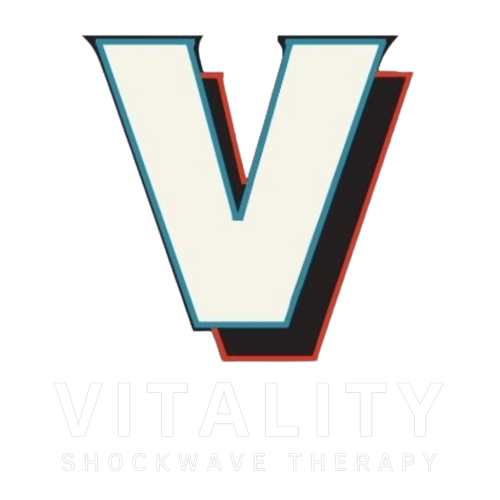Trigger Finger is a common yet often misunderstood condition that can significantly impact one’s quality of life.
This ailment, characterized by inflamed and irritated tendons in the fingers, affects countless individuals across various professions.
The conventional treatment methods for Trigger Finger focus on reducing inflammation or resorting to surgery. However, these approaches do not address the healing process of the tendon itself.
In this light, it becomes crucial to explore innovative treatments offering lasting relief and improved mobility for sufferers of Trigger Finger.
Table of Contents:
- Understanding Trigger Finger and Its Impact
- Traditional Treatments for Trigger Finger
- A New Approach to Treating Trigger Finger
- The Benefits of This Innovative Treatment Method
- Future Developments in Trigger Finger Treatment
- Conclusion
Understanding Trigger Finger and Its Impact
The phenomenon of trigger finger occurs when inflammation within the protective sheath that surrounds a tendon in your hand causes one or more fingers to stick in a bent position. This condition can have serious implications, particularly for those whose work heavily involves their hands.
Athletes who require precise control over their movements, entrepreneurs managing daily paperwork or using computers extensively, high-level executives signing important documents, police officers operating firearms or writing reports – all these professionals could find themselves significantly affected by developing trigger finger symptoms.
In its early stages, you may notice stiffness, especially during mornings, along with a small lump at the base on the palm side, which are common signs of this condition. But as it progresses, there’s an uncomfortable clicking sensation felt while moving the thumb difficultly due to the inflamed tendon sheath causing it to catch before suddenly pops straight, making even simple tasks like gripping objects challenging.
Finger Stiffness: An Early Warning Sign
If left untreated, complications from trigger finger, such as permanent bending of fingers, can occur greatly affecting quality life not only personally but professionally too hence importance understanding impact cannot be understated.
The Consequences of Ignoring Symptoms
Timely intervention is critical because prolonged lack of proper care triggers digits to eventually lock in place, rendering them virtually useless for normal activities, let alone specialized tasks required in various professions.
As seen in numerous case studies, individuals suffering ignored minor discomforts thinking they would pass instead found themselves struggling to carry out basic functions, leading to a significant drop in productivity and efficiency in the workplace and personal life alike.
Main Idea:
Ignoring the early signs of trigger finger, like stiffness and a small lump in your palm, can lead to severe complications such as permanently bent fingers. Timely medical intervention is crucial to prevent further damage and maintain productivity both professionally and personally.
Traditional Treatments for Trigger Finger
The conventional approach to managing trigger finger symptoms often involves a blend of non-surgical interventions and, in severe cases, surgical procedures. The primary goal is reducing inflammation and restoring the normal gliding motion within the affected finger’s tendon sheath.
Non-Surgical Interventions
In most instances where trigger finger occurs, initial treatment strategies involve conservative measures designed to alleviate discomfort. One such method is splinting – an effective way to rest the irritated digit while also minimizing further irritation (Mayo Clinic). In addition, over-the-counter pain relievers or anti-inflammatory drugs can be used as part of comprehensive trigger finger care.
Steroid injections directly into the protective sheath are another popular intervention recommended by healthcare providers when dealing with persistent inflammation(National Institutes of Health).
Surgical Procedures
If non-surgical treatments fail or if one keeps developing trigger fingers that recur after successful previous treatments, surgery might become necessary. Surgical options aim at widening the opening of your tendon sheath so that it allows smoother movement without getting stuck.
Percutaneous release stands out among these procedures: here a needle breaks apart constriction on your palm side under ultrasound guidance(PubMed Central). Open release surgery provides direct access through incision made in palm side allowing thorough management restrictive tissues causing clicking sensation sudden pops straight action(American Academy Of Orthopaedic Surgeons).
- A Limitation Worth Noting:
While traditional methods have been instrumental in providing symptomatic relief for many individuals suffering from this condition they do not necessarily address underlying issues like healing process within tendons themselves which could potentially lead towards recurrence down line.
This underscores need exploring innovative approaches adhesion removal stem cell stimulation aiming not just symptom reduction but long-term improvement treating root cause itself.
Main Idea:
Traditional treatments for trigger finger, such as splinting, medication, steroid injections and surgery provide relief but often fail to address underlying tendon issues. Hence the need for innovative approaches like adhesion removal and stem cell stimulation that target root causes for long-term improvement.
A New Approach to Treating Trigger Finger
As medical science progresses, novel treatments are being developed that challenge traditional methods of treatment. A promising method for treating trigger finger involves two key components: removing adhesion from the affected finger’s tendon sheath and stimulating stem cell production in the tendon.
The Role of Adhesion Removal in Tendon Healing
In cases of trigger finger, a condition where an individual’s fingers or thumb become difficult to straighten suddenly due to inflammation within their protective sheath, one must understand how adhesions contribute towards it. These bands formed by scar tissue can restrict movement causing stiffness and pain.
Studies have shown that eliminating these obstructions allows tendons freedom once again leading to normal function restoration. This is often achieved through specialized manual therapy and shockwave therapy techniques designed specifically for this purpose.
Stem Cell Stimulation for Tendon Repair
Beyond merely addressing symptoms like clicking sensation when moving your ring finger or any other affected digit(s), our aim should be cellular level healing – introducing us into realm of stem cells with unique regenerative properties capable differentiating various body cells including those found tendons themselves.
In recent years, research has indicated the potential benefits introduced more stem cells into damaged areas could accelerate repair processes significantly faster than conventional treatments alone which primarily focus on symptom management rather than root cause resolution.
The Benefits of Shockwave Therapy Treatment Method
Shockwave Therapy offers several advantages over traditional corticosteroid injections or surgery as means managing complications related trigger digits such improved range motion along decreased levels discomfort time without having rely heavily drugs face risks associated invasive procedures.
Focusing promoting natural healing mechanisms instead simply controlling symptoms temporarily medication surgical intervention patients may experience lasting relief restored mobility thus improving overall quality life particularly athletes entrepreneurs high-level executives police officers healthcare providers who depend extensively their hands daily activities.
Main Idea:
This fresh take on treating trigger finger focuses not just on symptom management, but also addresses the root cause. By removing adhesions and stimulating stem cell production in tendons, this innovative approach offers lasting relief and improved mobility without relying heavily on drugs or invasive procedures.
The Benefits of Shockwave Therapy Treatment Method
As we navigate the landscape of trigger finger care, it’s clear that traditional treatments often fall short. They may offer temporary relief but fail to tackle the root cause – adhesion in the tendon sheath. In contrast, this innovative approach brings a multitude of benefits not found with conventional methods.
A Greater Range of Motion
This treatment targets one primary goal: restoring complete function and movement in affected fingers. Unlike surgical procedures which can lead to scarring or other complications affecting mobility, this non-invasive procedure promotes healing at a cellular level while preserving tissue integrity.
Pain Reduction Through Tendon Repair
Inflammation is an important factor contributing towards discomfort associated with trigger finger symptoms. Traditional treatments usually involve administering anti-inflammatory drugs which only provide short-term symptom management rather than treating underlying issues causing inflammation itself. However, this novel therapy aims at reducing inflammation by addressing its source directly – damaged tendons laden with excess adhesive build-up. Stimulated stem cells during the process aid repair work leading not just toward symptom control but actual recovery resulting in a substantial reduction in pain levels over time.
Lasting Relief from Symptoms through Stem Cell Stimulation
One of the key advantages of shockwave therapy treatment is its ability to provide lasting relief from trigger finger symptoms. By stimulating stem cells in the affected area, the therapy promotes natural healing and regeneration. This new treatment offers enduring respite from trigger finger symptoms, not only relieving present pain but also stopping potential future episodes and boosting one’s wellbeing.
Shockwave Therapy helps stimulates stem cells in the affected area and promotes the natural healing and regenerative process in the body.
Future Developments in Trigger Finger Treatment
The landscape of trigger finger care is ever-changing, with advancements and breakthroughs being made regularly. As healthcare providers and researchers strive to find more effective solutions for this condition, one area that shows great promise involves the use of shockwave therapy.
These naturally occurring substances found within our bodies are now being considered as potential treatments for a range of musculoskeletal conditions including trigger finger. Shockwave therapy has shown its ability to reduce inflammation while promoting tissue regeneration in the affected tendon sheath.
Main Idea:
Shockwave Therapy is revolutionizing trigger finger treatment. It reduces inflammation, promote tissue regeneration and offers a safer alternative to traditional methods.
Conclusion
Trigger Finger can be a debilitating condition, but understanding it is the first step towards healing.
Traditional treatments may provide some relief, but they rarely offer a lasting solution.
A new approach to treatment – one that focuses on adhesion removal and shockwave therapy to promote stem cell stimulation – holds promise for lasting improvement.
This innovative method aims not just at symptom management, but actual tendon repair and restoration of full range of motion.
The benefits are clear: decreased pain levels, improved mobility, and freedom from recurring symptoms.
In essence, Trigger Finger need not be an insurmountable hurdle; it could well become another health challenge we learn to effectively manage thanks to advancements in medical science.
We would love to help. Schedule your appointment by calling 630-499-4078 or click here https://www.schedulicity.com/scheduling/VCCB5R

